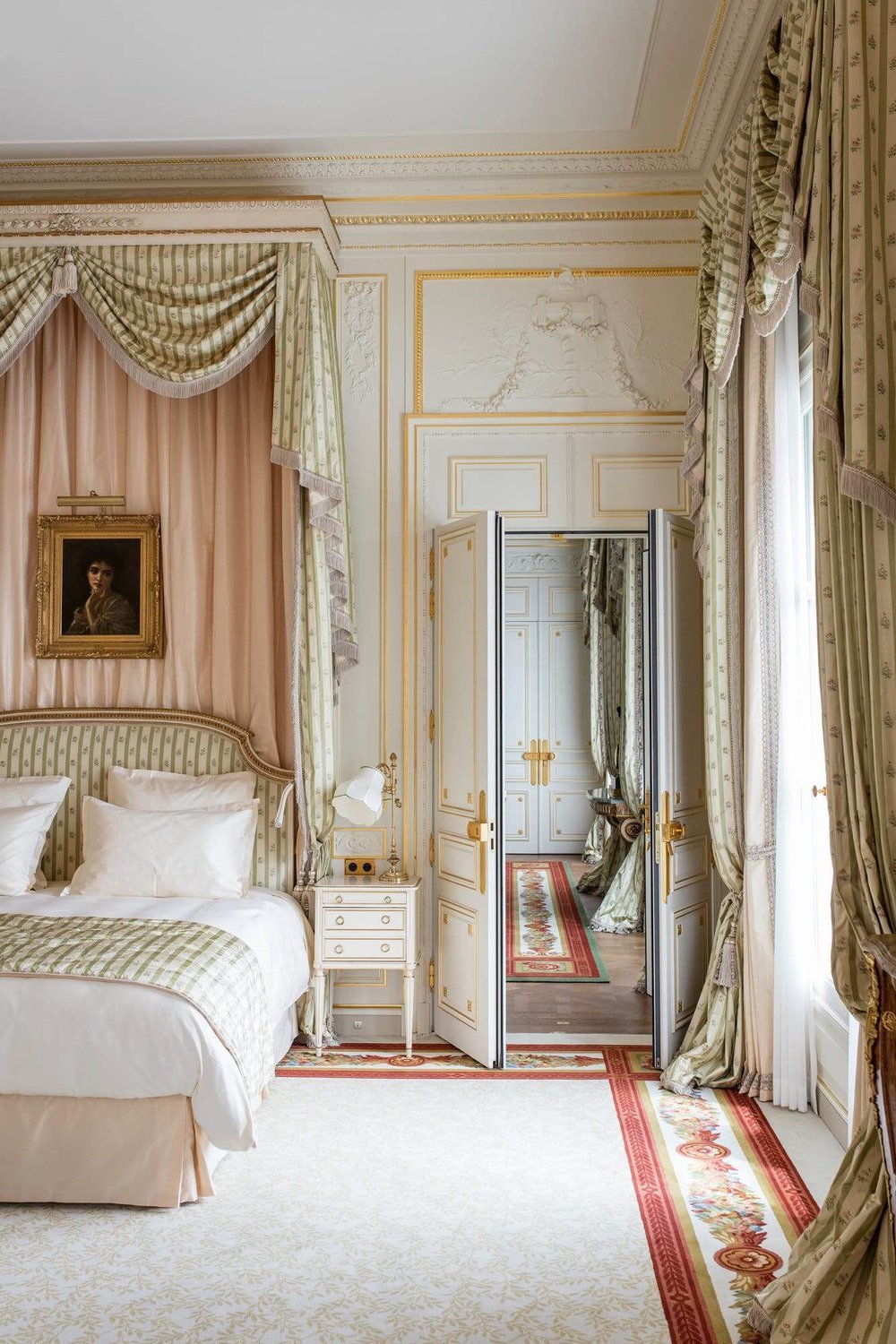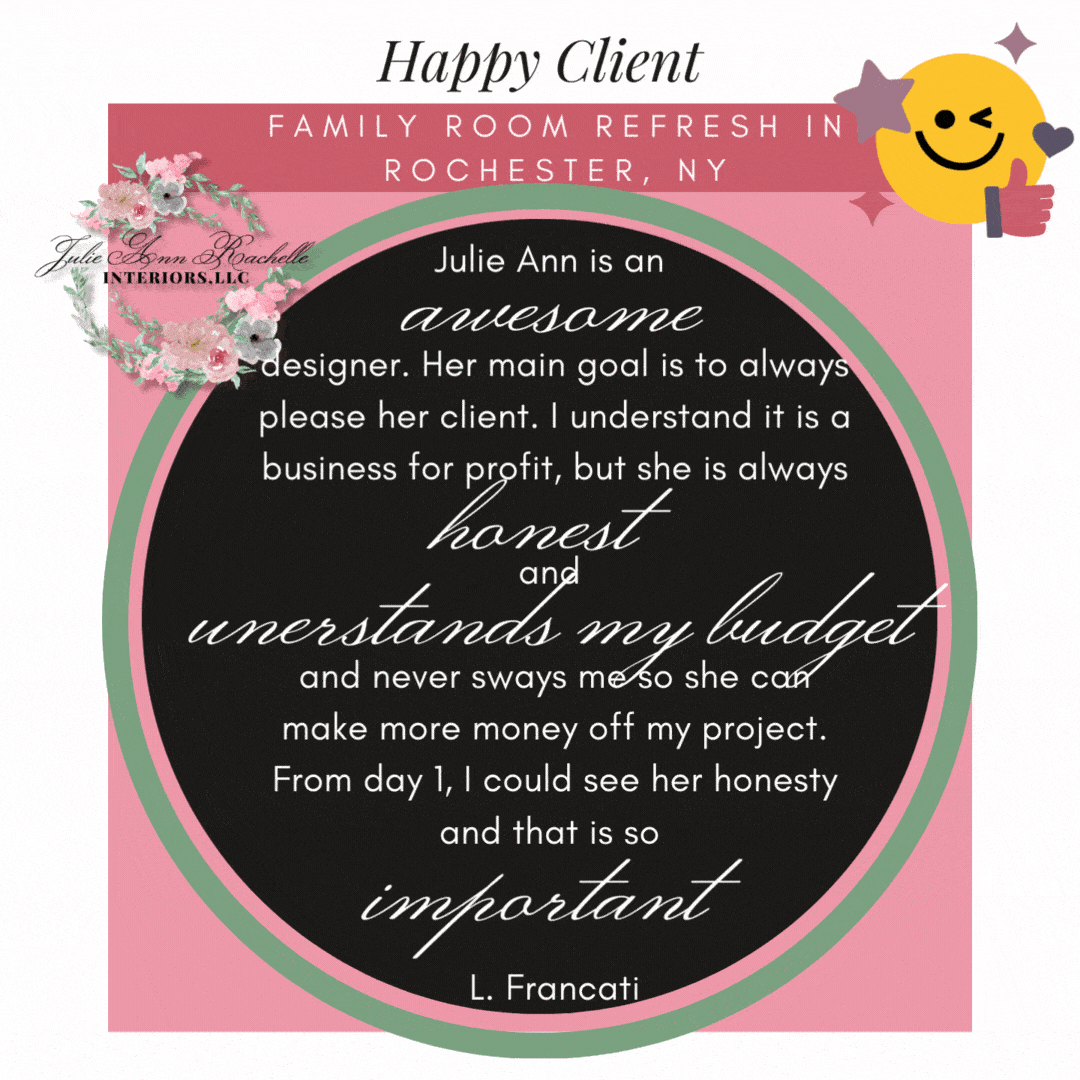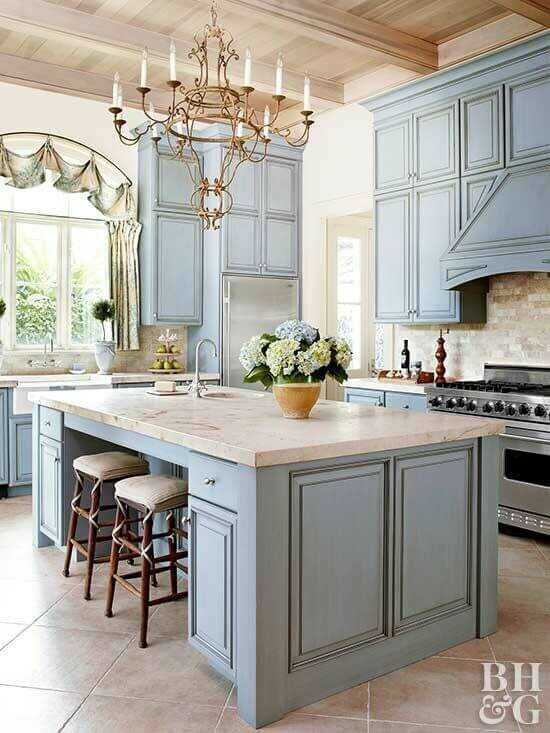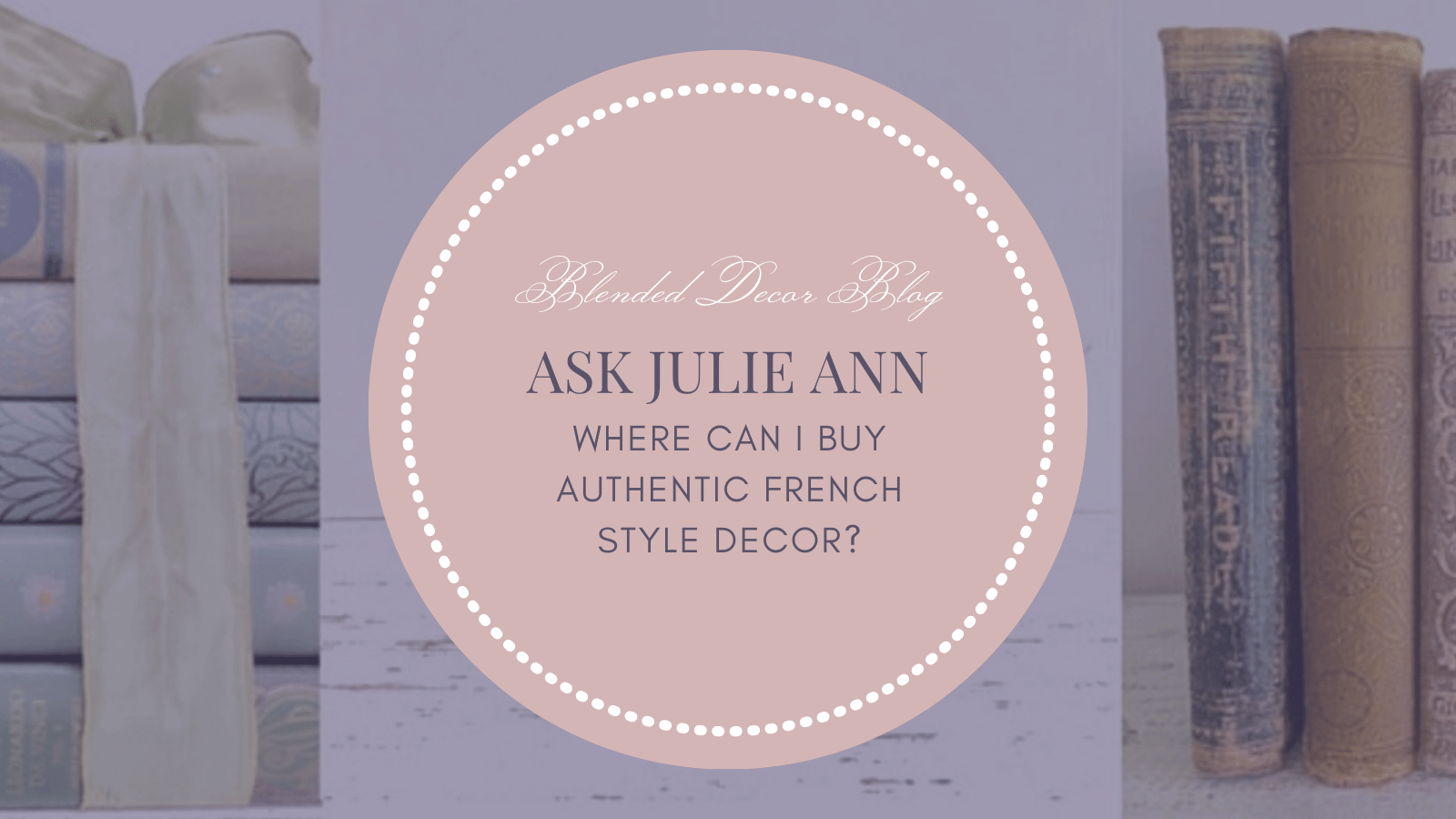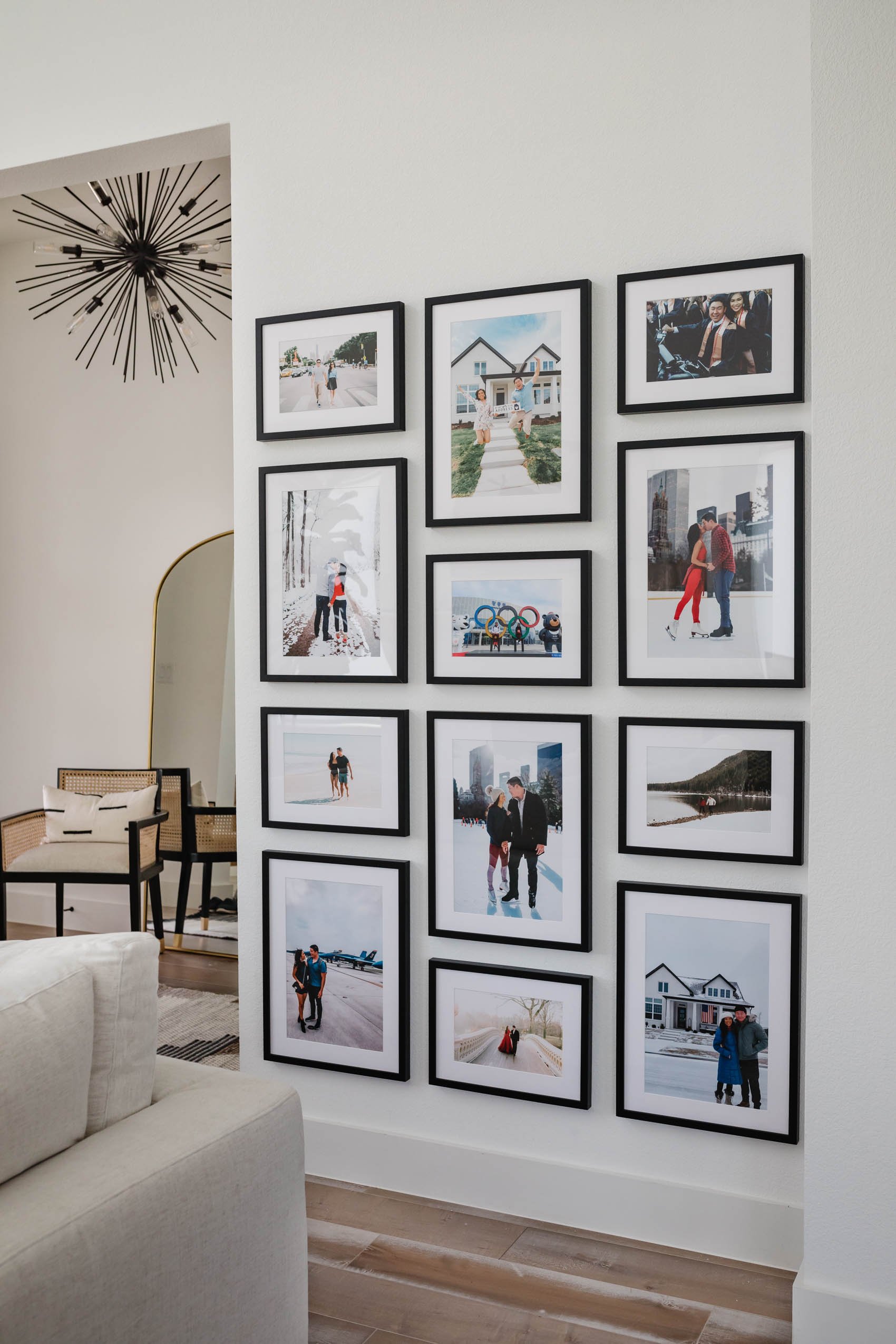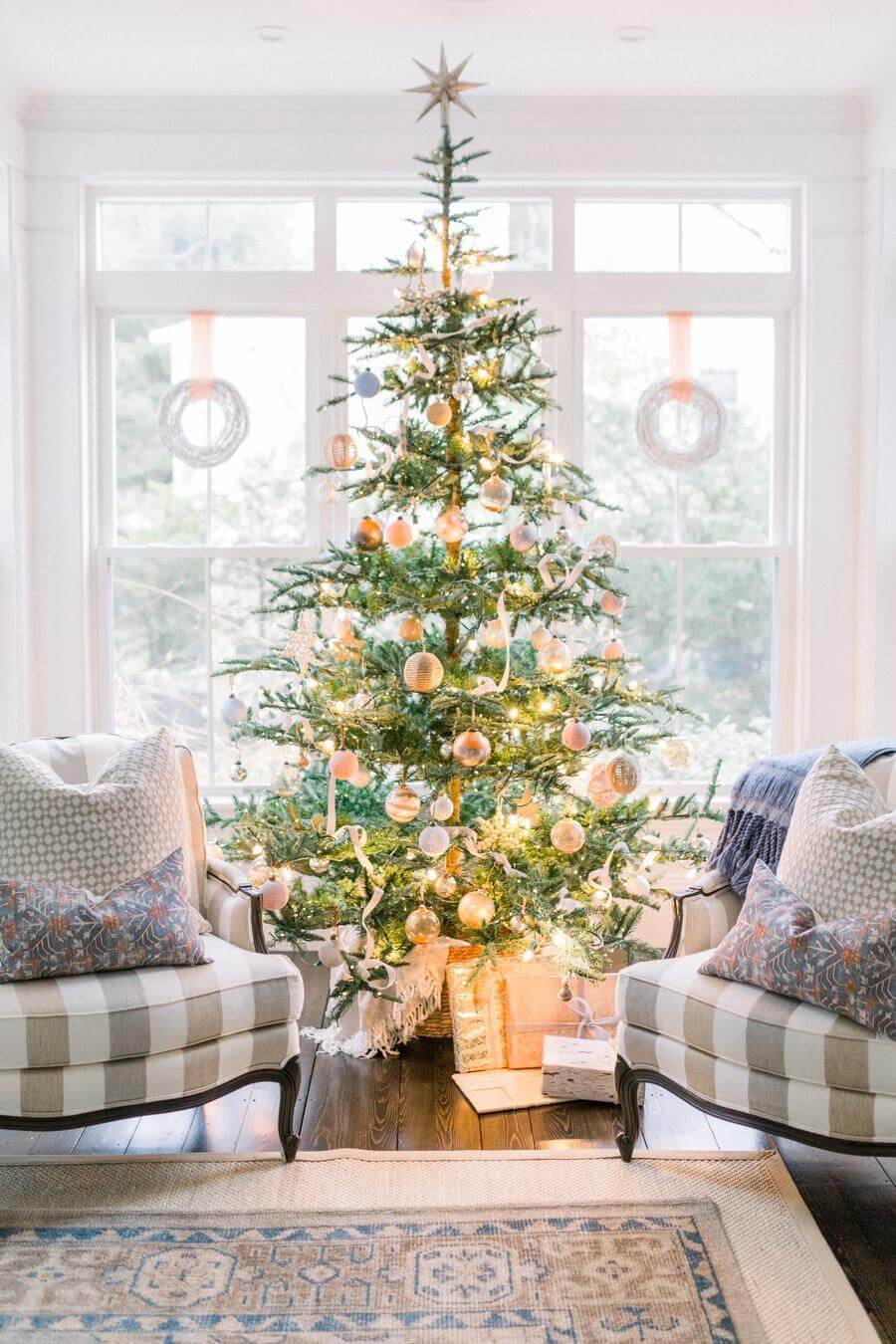Master Your Interior Design Style: Five Questions To Help You Find Your Signature Look
How to Find Your Interior Design Style: Part 1 0f 2
Dear Julie Ann,
We just moved into a new home, and I am really trying to find my interior design style.
How do you suggest people get started? - Neely
Dear Neely,
Creating a home that mirrors your personality begins by understanding your unique style. With so many design options available, it's easy to feel lost. Don't worry—I'm here to help. This guide will lead you through five straightforward questions to pinpoint your signature look. You'll explore your color preferences, lifestyle needs, and much more to craft a space that truly feels like yours. Let's begin your journey to master your interior design style.
Topics:
Question 1: What inspires you?
Question 2: What colors do you love?
Question 3: What patterns speak to you?
Question 4: What shapes and textures do you prefer?
Question 5: What is your lifestyle like?
People also ask
Conclusion
Comments
Related Reading:
Question 1: What Inspires You?
One of the first things to consider when defining your interior design style is to explore what inspires you. Inspiration can come from anywhere - whether it be a Pinterest board, a beautiful piece of artwork, or simply the colors and textures of nature.
By understanding what inspires you, you can start to identify key themes and motifs that are important to you. This information will be invaluable as you create a space that reflects your personality and lifestyle.
So, what inspires you? Take some time to think about the different things that make you feel happy and fulfilled. Your inspiration could be a particular art style, music, or a favorite vacation destination. As you identify your sources of inspiration, you can create a space that reflects your unique personality and tastes. Here’s a partial list from Clare Le Roy and Kelly Wearstler.
Local and daily inspiration
Pay attention to the things that you find beautiful, interesting, or inspiring - things that evoke an emotional feeling in you. Things such as:
architecture, interior design, fashion, and cultures that you see when you travel
bookstores including
Tsutaya Books (Tokyo)
Owl Bureau (Los Angeles)
The Last Bookstore (Los Angeles)
Hennessey + Ingalls (Los Angeles)
Strand Bookstore (New York).
browse shops in-person like
@droog (Amsterdam)
ABC Carpet & Home (Manhattan and Brooklyn)
Atelier Mouti (Paris)
Betsu (Philadelphia)
Bi-Rite Studio (Brooklyn)
Collier West & CW Annex (Brooklyn)
DFS (Venice)
Dover Street Market (Tokyo)
Good Neighbor (Baltimore)
House of Treasures Emporium (Nairobi)
Mohawk General Store (L.A.)
Pilot and Powell (New Orleans)
Sleepy Poet Antique Mall (Charlotte, NC)
The Store X Soho House (Berlin)
design coffee table books
fashion museums
flea markets—such as Paul Bert Serpette (France), the Original Round Top Antiques Fair (Texas), and Brimfield Antique Flea Market (Massachusetts)
high end hotels - often design pushes boundaries in these spaces and can trigger ideas for projects
masterpieces in art museums as well as the architecture of the museum
nature, such as:
colors and textures of nature at different times of day
daydreaming while walking outdoors
ideas from landscape designers
runway shows of your favorite designers to inspire shapes, styles, colors
textures you encounter daily
the design of your favorite restaurant
think about the memories and experiences that are important to you
trending and latest jewelry styles
trending fashion in stores
TV/film fashion
TV/film historical pieces
TV/film set design
your closet
your favorite fashion magazines
Websites to Visit for Design Inspiration:
Apartment Therapy: A lifestyle and interior design community with tips and expert advice on creating happy, healthy homes for everyone.
Artsy: An online art marketplace that connects art lovers, collectors, and institutions with the world's leading galleries and artists.
Design Hunting on Curbed: In-depth coverage of the design world, with a focus on the best interiors in NYC, (a division of the New Yorker).
Domino: An online magazine with articles, galleries, and videos, featuring stylish and practical ideas for every room in the home.
Dwell: An online platform that features design-focused content and resources for modern architecture, interiors, and products.
Elle Decor: A leading interior design magazine and website that offers inspiration, trends, and resources for creating beautiful and functional living spaces.
Google or Pinterest searches for a particular period of time or style
Habitually Chic: A luxury lifestyle blog that covers fashion, beauty, travel, and home design.
House Beautiful: A magazine that covers magazine covers home design, decorating trends, DIY projects, gardening, and entertaining, as well as celebrity home tours and interviews with top designers.
Houzz: A social media platform and online database for interior design and home improvement.
Interior Design Magazine: A global, industry-leading design magazine and website serving the architecture and design industry.
My Domaine: A lifestyle website that provides inspiration and advice on home, design, entertaining, fashion, beauty, and travel.
Remodelista: A website that provides design inspiration and advice for renovating and decorating your home, as well as inspiration on home design, decorating, DIY projects, gardening, entertaining, sustainable living, and green design.
Sight Unseen: An online magazine and design fair that showcases the work of independent makers and creatives
The Design Files: Australia's most popular design blog covering real Australian homes, architecture, gardens, art, design, food and more.
The Spruce: A website that provides home and garden advice, including interior design tips, home décor, cleaning, and organizing.
The Zoe Report: A website that covers fashion, beauty, and lifestyle.
1stDibs: An online marketplace for high-end vintage and antique furniture, art, jewelry, and fashion
Homework:
Make a list of things that leave you awestruck. You can include vacation spots, hotels, music, artworks, natural wonders, etc.
Make note of what in particular makes your heart skip a beat about each item.
Based off of your refined Pinterest board of inspirational images, make a list of adjectives that describe how you want your home to feel. Narrow down the list to two-five words. Some common adjectives to describe a home atmosphere include:
Intimate
Whimsical
Bold
Modest
Busy
Energetic
Vibrant
Orderly
Formal
Soulful
Unpretentious
Uplifting
Elegant
Inviting
Trendy
Homey
Muted
Organic
Dignified
Meditative
Quaint
Tranquil
Cozy
Calm
Global
Spacious
Theatrical
Grand
Inspiring
Masculine
Feminine
Vivacious
Classy
Informal
Pristine
Opulent
Earthy
Matchy Matchy
Liveable luxe
Soft
Exotic
Textural
Question 2: What Colors Do You Love?
As you delve deeper into discovering your interior design style, it's essential to take a closer look at the colors that attract you. Whether you're looking to create a calming oasis or an energetic space, color can play a significant role in setting the tone.
Consider the colors that make you feel uplifted, calm, or energized, and take note of them. Maybe you're drawn to the soothing blues of the ocean or the warm yellows of a summer sunset. Perhaps bold, bright colors like reds and oranges excite and inspire you.
Understanding the colors you love can help you choose the perfect palette for your space. You can use your favorite hues as a starting point for creating a cohesive color scheme that reflects your unique personality and style. From wall colors to accent pieces, incorporating your favorite colors can create a space that feels truly personalized.
Now that you've explored your sources of inspiration and identified your favorite colors, the next step is to examine the patterns that speak to you. By identifying the patterns you love, you can begin to add texture and depth to your space, creating a unique and inviting environment that reflects your personal style.
Homework:
Make a list of all the colors that you’ve ever lived in. Next to each, make note of how the color made you feel.
Make a list of all the colors that you know you never want to have in your home.
Do you love mainly warm colors (reds, yellow, oranges) or mainly cool colors (blues, greens, purples)?
Do you like a monochromatic look (everything the same color), mainly neutrals, only black and white, bright and cheerful colors, or just a pop of color here and there?
Search the internet for _(insert color)_ palettes, and see what speaks to you. Add these to a Pinterest board for future reference. For instance, search for navy blue color palettes.
Write down adjectives for your personality. Research which colors match your adjectives.
Check out my "Color" Pinterest board, and save any images that speak to you on your own Pinterest board.
Check out my article 7 Useful Websites and Apps To Find the Best Paint Colors for Your Home
Question 3: What Patterns Speak to You?
Patterns play a vital role in interior design. They add character, depth, and texture to a space, and can completely transform the mood of a room. From bold geometrics to delicate florals, patterns can tell a story and reflect your unique personality.
To identify the patterns that speak to you, take a look at your wardrobe, your favorite textiles, and the art that catches your eye. Do you gravitate towards stripes or polka dots? Or do you prefer more intricate patterns like damask or paisley? Once you've identified the patterns that resonate with you, try incorporating them into your home decor in creative ways. For example, you could add patterned throw pillows to your couch, or choose a statement wallpaper for an accent wall.
List of patterns:
Bird/Animal Print
Plaid
Geometric
Stripe
Paisley
Floral
Prints
Mini-pattern
Abstract
Solid
Textured
Bold pattern
Leather
Chintz
Velvet
Tapestry
Chenille
Satin
Damask
Understanding the patterns you love is an important part of developing your interior design style. By incorporating patterns that reflect your personality and taste, you can create a space that feels uniquely yours. Next up, we'll explore how your preferred shapes and textures can influence your design decisions.
Homework:
Make a list of the patterns that with columns for Like, Dislike, and 50/50.
Compare your list with your spouse or partner.
Question 4: What Shapes and Textures Do You Prefer?
When it comes to interior design, shapes and textures matter just as much as patterns. Do you prefer smooth, sleek lines or curvy, organic shapes? Are you drawn to natural materials like wood and stone, or do you love the look of glossy finishes and metallic accents? Understanding your preferences for shapes and textures can help you create a space that feels cohesive and visually pleasing.
Shapes
Geometric Vs. Natural Shapes
Understanding your interior design style means understanding the difference between geometric and natural shapes. For example, geometric shapes are man-made, like that modern coffee table or angular sofa. Natural shapes are organic, like the lush pot plants you've placed around the room. Even within geometric shapes, you’ll find square, rectangular, and round forms – each communicating its own message. Squares and rectangles represent strength, while rounded shapes evoke a sense of softness.
Curved Shapes
Designing your home with form and shape is one way to ensure both aesthetic beauty and emotional health. Curved shapes can introduce a sense of relaxation and calm, while straight lines create a more focused atmosphere. Utilizing both forms of design can provide the perfect balance between a visually pleasing atmosphere and a healthy atmosphere to promote well-being.
Squares and Rectangles
Add squares and rectangles to your home's design! Layer rugs and include furniture like sofas and tables. Use layered curtains for your windows. You can also add rectangles and squares with window frames, light fixtures, and molding. They give structure and focus to your design while still being fun and creative.
Triangles
Triangles can be powerful in interior design. They symbolize stability, balance, and movement. A triangle facing left or right can mean progression. Geometric shapes add style and functionality to a space, making them great for hallways and staircases. Abstract triangles can also make a room more interesting. You can add them in furniture, art, rugs, and decorations.
Circles, Ovals, and Ellipses
Circles, ovals, and ellipses are popular shapes in interior design. They don't have any angles, making them look softer and smoother than other shapes. People often associate them with unity and protection, so they are often used in bedrooms and living rooms.
Designers use circles and other round shapes to create a sense of movement and flow in the room. The lack of angles lets the eye travel around the shape more naturally. Designers need to think about how these shapes can help create the overall look and feel of a room. They can give a space a sense of unity and protection, and also create movement and flow.
Interior design isn't just about aesthetics; it's also about psychology. Designers consider how shapes can impact a space and make it look and feel a certain way. Circles and round shapes can be used to create a pleasant and comforting atmosphere.
Pentagons, Hexagons, and Octagons
Pentagons, hexagons, and octagons are polygons - special shapes with five, six, and eight sides - that are often overlooked in interior design. They can be used as icons or logos to represent elements of daily life, as puzzle pieces to create larger designs, or to add intrigue to a space. They can also be used to create a sense of movement and flow. Designers should think about how these shapes affect the psychology of the space and use them to enhance the design concept.
Adding shelves in different shapes can make a room look more interesting! For example, a curved bookcase or shelf with an unusual shape can draw attention and make the room look more dynamic. Different shapes can also be used to create a focal point, or to show off certain areas of the room. Plus, it can help with storing things and make the room more organized.
Interior design can help create a focal point in a room by using shapes and elements which stand out. This could be a special piece of furniture, an eye-catching piece of art, or an unusual lighting feature. All these things draw your attention to a particular area.
Textures
You can add texture to a room by using many different items. Architectural components like crown molding, chairs, tables, and roof details can be highlighted. Furniture can also add texture; wooden chairs, silk chairs, and marble tabletops all add a distinct feel. Shadow boxes, trinkets, and even flowers can help make the room stand out. Floor and wall coverings like carpets, wallpapers, and tile can also bring texture to a space. Textile materials like slipcovers, cushions, and throws can also add texture. You can also add organic items like artisan ceramics, woven baskets, raw geodes, and wooden spheres. Metal wall art, macramé wall hangings, and vintage signs in modern, bohemian, or country styles can also be added. Wood furniture and shiplap walls are also great for adding texture. Tufted upholstery, nailhead details, pintucked blankets and pillows, and silk curtains all create visual and tactile texture. Finally, installing stone, glass tile, slate floor tiles, weathered brick, and textured wallpaper also add texture to a room.
Don’t forget to think about your favorite metals and finishes such as:
List of finishes:
Antiqued (Traditional, rustic, French Country styles)
Brushed (Modern, industrial)
Hammered (French Country)
Polished (Traditional)
Satin (Modern, mid-century modern)
List of metals:
Aluminum (works best with cool colors)
Stainless Steel (works particularly well with cool tones. If you use stainless steel with warm tones, using other gray accent pieces can help the metal fit in better.)
Brasses including gold (used to brighten a space with cool tones, and it mixes well with wrought iron)
Copper (great way to add warmth to a white or neutral-toned kitchen or bathroom)
Wrought Iron (Wrought iron shines in a space that is mostly white or neutral-toned. Avoid using wrought iron in a room with lots of dark colors, as it will blend in with the space.)
Taking your shape and texture preferences into account can help you create a space that feels tailored to your tastes and needs.
Homework:
Look at your existing home decor, and make a list of your preferred shapes. Do you have a lot of square, boxy furniture pieces, or do you prefer more rounded shapes?
Looking at your home decor: Do you have a lot of rough, textured surfaces like woven throw blankets or shaggy rugs, or do you prefer smooth, polished finishes?
Pay attention to what catches your eye and what feels comfortable to you. Add your favorites to your list.
Question 5: What Is Your Lifestyle Like?
As much as your personal style is a critical factor in defining your interior design, your lifestyle is also an essential factor to consider. It would be best to ask yourself how you live in your space, from your daily routine to your social activities. Consider what makes you happy and comfortable.
If you are a busy person who is always on the go, you may want to consider furniture and decor that are easy to maintain and clean. If you are a social butterfly, you may want to create open spaces to entertain your guests. On the other hand, if you are a homebody, you may want to create cozy spaces that encourage relaxation and comfort.
Your lifestyle can also influence the color schemes, lighting, and patterns in your space. If you have kids, you may want to choose colors and patterns that are kid-friendly and playful. If you work from home, you may want to choose lighting that is conducive to work and productivity.
Homework:
Answer these questions.
Which room(s) do you live in the most?
Is your room mostly furnished, does it need just the finishing touches, or do you need to start from scratch?
What is the biggest challenge in this room to design or decorate?
Who uses this room the most, and how is it used?
People Also Ask
What is the most popular interior design style right now?
The most popular interior design style right now is a mix of modern and traditional elements. This style is often referred to as "transitional" design. Transitional design is characterized by its use of clean lines, neutral colors, and simple furniture. However, it also incorporates elements of traditional design, such as wood accents, crown molding, and chandeliers. This mix of modern and traditional elements creates a space that is both stylish and comfortable.
The geographic area that you live in may prefer a certain design style. Overall, the most popular interior design styles right now are:
Mid-Century Modern: MCM incorporates elements from the mid-20th century such as clean lines and organic shapes.
Rustic Farmhouse: Rustic Farmhouse style is a design aesthetic that evokes the simplicity and charm of a country home
Eclectic Bohemian. Bohemian style combines bold colors, patterns, and textures to create an eclectic and inviting atmosphere. Eclectic means that additional styles are blended in as well.
Additional popular styles include traditional, transitional, contemporary, modern farmhouse, modern coastal, industrial, French country, and Scandinavian.
Traditional style includes dark walls, large furniture, and elegant lighting, and it tends to give a room a sense of grandeur and old-world elegance.
Transitional style combines traditional and modern elements to create an updated look.
Contemporary style is clean and modern, with minimalistic and streamlined designs.
Modern farmhouse style combines rustic elements with modern touches to create a cozy and inviting living space.
Modern coastal style blends contemporary and beachy vibes to create a light and airy atmosphere.
Industrial style consists of metal, wood, and leather elements along with exposed pipes and ductwork.
French Country style is a combination of rustic and elegant elements that exude a romantic and cozy vibe.
Lastly, Scandinavian style is characterized by light colors, natural materials, and minimalist designs.
What are some of the current design trends?
Design trends tend to have a 20-year life cycle. Here are some of the current trends and core aesthetics.
Aesthetic Bedrooms (Tiktok-inspired)
Barbiecore (check out subtle ways to incorporate Barbiecore)
Global (read more above)
Hipstoric Home Aesthetic
Home Office (My articles about home offices can be read here)
Old-Money Aesthetic
Vanilla Girl (scandinavian + minimalism + japandi)
What factors should I consider when decorating?
When decorating your home, there are a few important factors to consider. First, choose style elements and accessories that you and your family will enjoy and use in the long run. Also consider the amount of light your space gets, and choose paint colors and lighting that can brighten your space. Take notes about the dimensions of your room to make sure that you find furniture that fits. Additionally, curate your home's style by only bringing in things that make you happy, and take it easy on the accessorizing.
Then, take note of what furniture, accessories and paint colours you have, and create a Pinterest board of rooms you love. Use the items you already have in your home and your Pinterest photo collection as a reference, and make a list of all of the distinct features you see in the furniture, accessories, fabrics and paint colours. Match it up to 1, 2 or 3 of the 10 common decor styles to find what home style (or styles!) you are.
Sources:
Kelly Wearstler’s 8 Tips for Finding Design Inspiration, MasterClass.com, Masterclass, 2021-06-16
The Journey To Finding My Interior Design Style & 5 Ways To Find Yours Too - A Glass of Bovino, Alisa Bovino, 2019-03-09
The Complete Guide To Use Textures in Interior Design | Foyr
Types of Metal and Finishes Guide | Wayfair
Explaining the 7 Elements of Interior Design | Furnish & Finish
How to Discover Your Interior Design Style – jane at home, Jane
Tips for Finding Your Decorating Style, TheSpruce.com, SARAH LYON , 2022-11-06
Where to get interior design inspiration (full resource list) | LinkedIn, Clare Le Roy’s Newsletter, Clare Le Roy. 2022-03-20
INTERIOR TRENDS 2024 | The top decor trends according to Pinterest, Italian Bark
10 great websites to get interior design inspiration, Malcorboy.com, Admin
What Does Your Interior Design Style Say About You?, Homemakers.com
Interior Design Style Quiz, Designer Society of America - Interior Design Education, Certification, Interior Designers, Resources,
European Eclectic, The Ginger Home
What's Your Home Style Aesthetic?, Buzzfeed, sarah aspler, 2017-04-05
10 Questions To Determine Your Interior Design Style - BobbyBerk.com, Bobby Berk
Five Questions That Interior Designers Ask to Define Your Home's Style, Martha Stewart
6 Questions Your Interior Designer Will Ask to Find Your Style, Creative Home Stagers
20 Ways to Identify Your Design Style - A Thoughtful Place



